Men’s Journal aims to feature only the best products and services. We update when possible, but deals expire and prices can change. If you buy something via one of our links, we may earn a commission.
Wet weather doesn't have to spoil your plans. The best rain jackets will keep you warm, dry, and protected from the elements, whether you’re biking, hiking, traveling, or just running errands. You don’t always need one, but when you do, you’ll be glad you have it.
Because most outdoor brands offer their own versions of a rain jacket, buying one that fits your specific needs can feel like a gamble. In the list below, I've sorted the differences and details for you, so you can grab a reliable layer that will shed water and keep you dry and comfortable no matter what you’re doing outside.
What to Consider When Buying a Rain Jacket
Before buying, ask yourself a few key questions. Where will you be wearing your rain jacket the most? Do you need to stay dry while running, hiking, or biking? Do you need one for everyday use? Or would you prefer a hybrid jacket that transitions from town to trail?
Depending on your needs, consider the jacket’s weight, packability, pockets, and materials. A lightweight windproof and water-resistant layer, for example, is best for keeping precipitation and wind from leaking in during quick runs and bike rides. You can pack it down and stash it easily in a pocket or pack, but the lighter material might not keep you dry if you get stuck in a downpour or spend long periods in steady rain.
A heavy-duty, three-layer (more on that below), fully waterproof rain jacket is better for all-day excursions in town or in the backcountry. The thicker construction will also resist tears, but the downside is that it will likely weigh more and won’t pack down as small.
Next, consider your price range. You can expect to spend at least $100 on the low end and beyond $500 on the high end for a waterproof rain jacket.
What to Look for in Rain Jackets
The most important detail to look for on a rain jacket’s product description is the layering system, which refers to the way the jacket’s waterproof membrane is built into the fabric of the jacket. The layering system is typically described as 2L, 2.5L, or 3L.
2L Jackets
A two-layer jacket consists of an outer face fabric and a second waterproof layer (like Gore-Tex) or a waterproof coating bonded to it on the inside of the jacket. Usually there’s a mesh liner on the inside to reduce clamminess and protect the waterproof membrane from rubbing against your body as you move. These jackets are usually in the mid-weight range.
2.5L Jackets
2.5L jackets feature a durable outer face fabric, a waterproof membrane applied inside it, and then a protective coating applied over the waterproof membrane—that’s where the “.5” comes from. Even though it’s counterintuitive, a 2.5L jacket is typically the lightest of the three designs.
3L Jackets
A 3L jacket offers the most robust waterproofing and durability. These jackets are made with a face layer, a waterproof membrane, and an interior liner fabric all sandwiched together. These are usually the most expensive option, but they’re ideal for protection on extended backcountry trips and they offer strong breathability, too.
DWR Coatings
Most rain jackets have a DWR (durable water repellent) coating applied to their exteriors. These coatings cause raindrops to bead up and roll off the jacket rather than sinking in and soaking the fabric. While the waterproof membrane within the jacket blocks water, the DWR coatings keep the face fabric from getting soaked, improving breathability and preventing the clammy, wet feeling that can make a rain jacket uncomfortable. When shopping, look for jackets with DWR treatments that are free of PFC and PFAS, chemicals that can be harmful to your body (and harmful to the environment as well).
DWR coatings will break down over time, and they become less effective as your jacket gets dirty. To keep your rain jacket functioning at its best, launder it according to its care instructions. If the DWR still doesn’t work, you can reapply it with an at-home treatment.
As for the other features in a rain jacket, it boils down to your needs and preferences. Hood shapes differ from model to model, but you want your hood to stay up in the wind to keep rain from leaking in—look for hoods with adjustable cinches or moldable visors to block water. For high-intensity activities like running, look for jackets with vents in high-heat areas like the back or armpits. They’ll allow you to dump heat and stay cooler without taking off the jacket completely.
You can’t always predict the weather, but you can always be prepared. Below, we researched product lineups across top brands like Patagonia, Eddie Bauer, and more and selected the best rain jackets to keep you dry on any kind of adventure.
The Best Rain Jackets of 2023
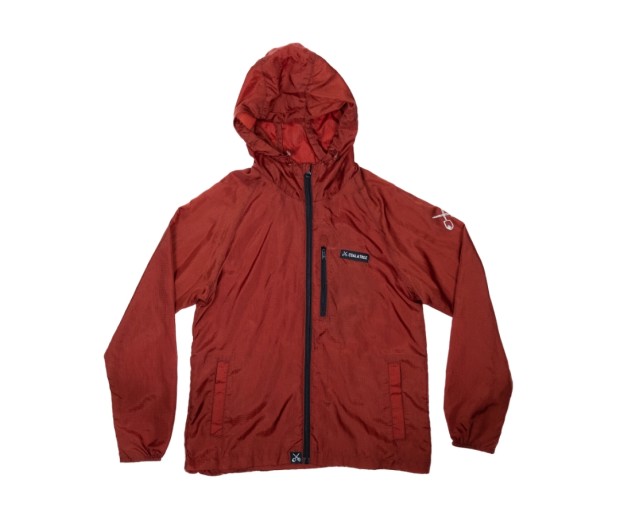
Courtesy Image
Like a second skin, the Whistle Windbreaker will heal itself in the event of scrapes, punctures, and tears—a useful feature on a rain jacket, where even a small hole can ruin waterproofing. This windbreaker is made with DWR-coated 100-percent nylon HiloTech Self-Healing material. If it tears, just rub the fabric between your fingers to create friction and heat—the material will stick together and repair itself. Better yet, it stuffs down into its internal mesh chest pocket and weighs only seven ounces. When it gets dirty or stinky, just toss it in the washing machine.
[$125; coalatree.com]
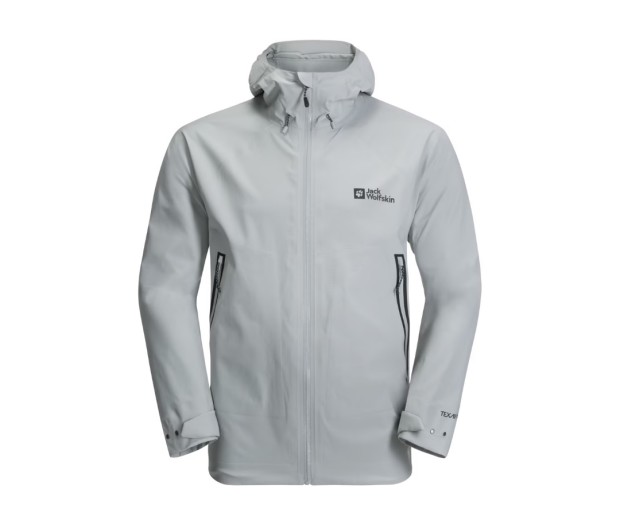
Courtesy Image
Seams are typically the weakest point in waterproof gear. But the 3L Jack Wolfskin Tapeless 2.0 has won multiple outdoor industry accolades for its innovative design that eliminates the traditional method of seam sealing. Instead of using tape to seal seams, the Zero Tape technology fuses the fabric sections together, creating a waterproof bond that doesn’t require tape to block moisture. Its matte finish, roomy and flexible fit, and minimal zips make it both fashionable and functional.
[$500; us.jackwolfskin.com]
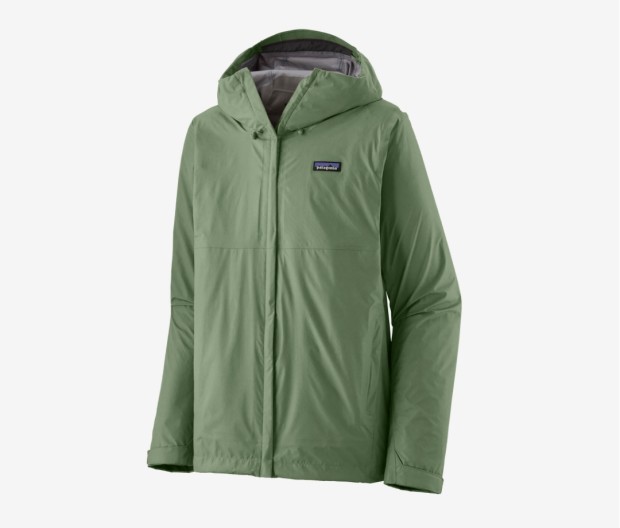
Courtesy Image
Getting wet isn’t comfortable, but being wet and cold is even worse. Patagonia’s H2No standard ensures waterproof performance and breathability without using harmful perfluorinated chemicals (PFCs). The Torrentshell is a 3L, DWR-treated jacket with an adjustable hood and waist drawcord for a snug, rain-blocking fit, a comfy microfleece-lined neck, handwarmer pockets, and pit zips with storm flaps for venting excess heat. At 14.1 ounces, it’s not the lightest jacket on the market, but it does pack down into the left hand pocket, so it won’t take up too much room in your pack.
[$179; backcountry.com]
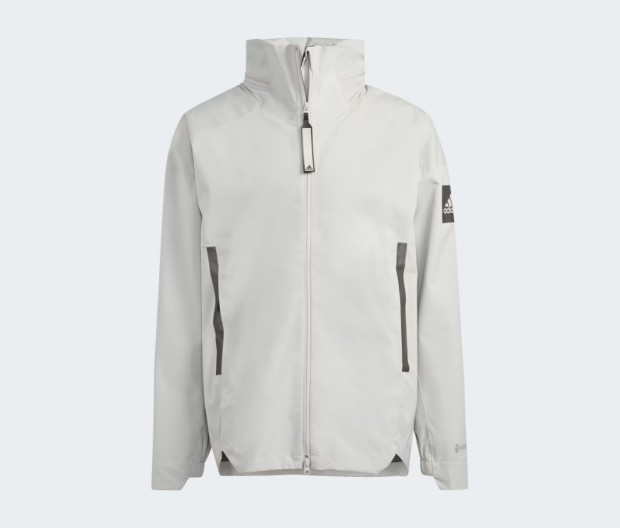
Courtesy Image
The MyShelter rain jacket is just that—a shelter that will keep you dry in sprinkles or torrential storms. It features a 2L construction with sealed seams and a 100-percent recycled polyester plain weave face fabric that helps channel heat and moisture away from your body. When the sun returns, you can remove the hood from the sporty layer or add the detachable straps for hands-free carrying.
[$210; adidas.com]
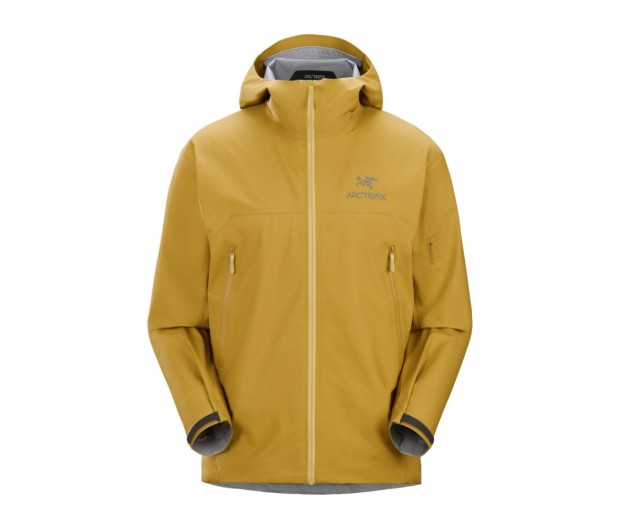
Courtesy Image
The Arc’teryx 3L Beta Jacket is simple but effective: It has everything you need and nothing you don’t. The low-profile fit is ideal for wearing under a heavy backpack on trekking trips, but it also makes this jacket great as an everyday rain layer—you won’t feel like you’re wearing a tent. Cinch down the hood with the adjustable pull and secure the Velcro cuffs for a closer fit in blustery conditions. Taped seams and a Gore-Tex waterproof membrane block out rain, and the Gore-Tex layer is made with a knit backing for a comfy feel against your skin.
[$400; arcteryx.com]
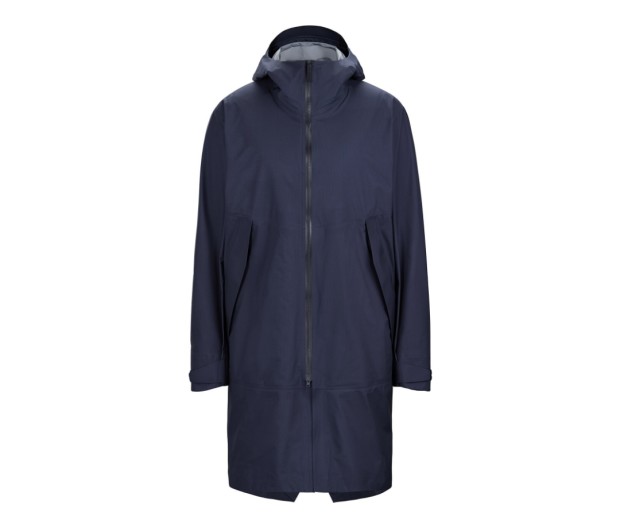
Courtesy Image
Yes, the price tag is outrageous compared to other picks on this list. But if you’re someone who prioritizes quality in your outdoor gear, this is an opportunity to buy once and never have to buy again. Veilance is a sub-label of Arc’teryx, and it’s known for its high-fashion technical pieces. The Monitor is not quite a trench coat, but the long silhouette, Gore-Tex membrane, and fishtail hem offer ample coverage and rain protection. The 13-denier fabric—on the lower end of the fabric weight spectrum—is best for wet and warm climates, and the sleek, muted design makes it ideal for everyday wear.
[$850; arcteryx.com]
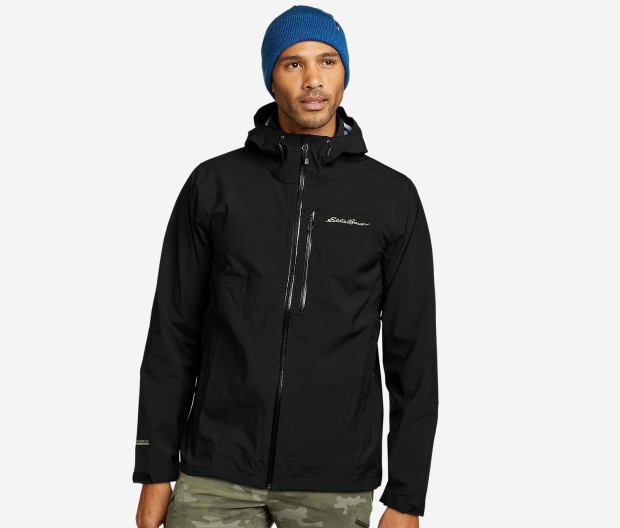
Courtesy Image
The Cloud Cap 3L is packed with features and has a very reasonable price point. The 100-percent recycled polyester outer layer has enough stretch to move with you, whether you’re shouldering a pack or hauling grocery bags. Like most rain jackets, this one has two zippered hand pockets and one chest pocket for storing essentials; it also includes zippered armpit vents to dump heat during high-intensity activities. It’s finished with StormRepel, Eddie Bauer’s proprietary DWR coating, to shed moisture and keep you feeling comfortable. The Cloud Cap has a roomy fit, and you can also get it in tall sizes.
[$179; eddiebauer.com]
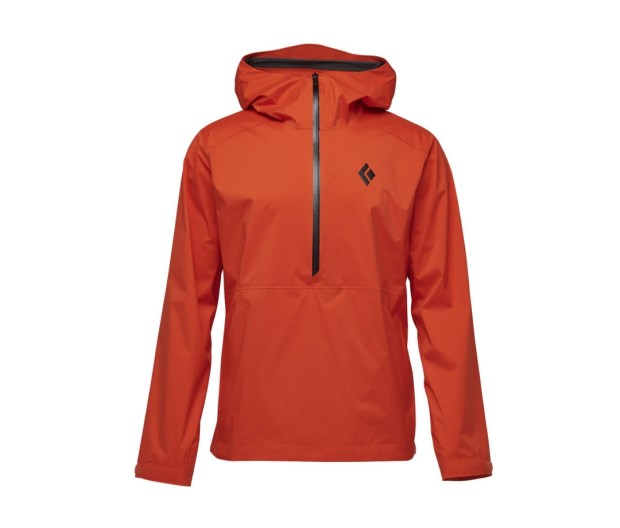
Courtesy Image
The Stormline Stretch Anorak is waterproof, windproof, and breathable, and it strikes a nice balance between a pullover and a full-zip rain jacket. You can wear it hiking, running, or walking around town, but it’s especially great for climbing because of its helmet compatible hood. Unlike other tightly-woven materials, the flexible shell fabric moves with your body, even when you’re reaching for the next hold; underarm gussets also boost this layer’s freedom of movement. A large kangaroo pocket has zippered access on both sides so nothing falls out on your ascent.
[$155; blackdiamondequipment.com]
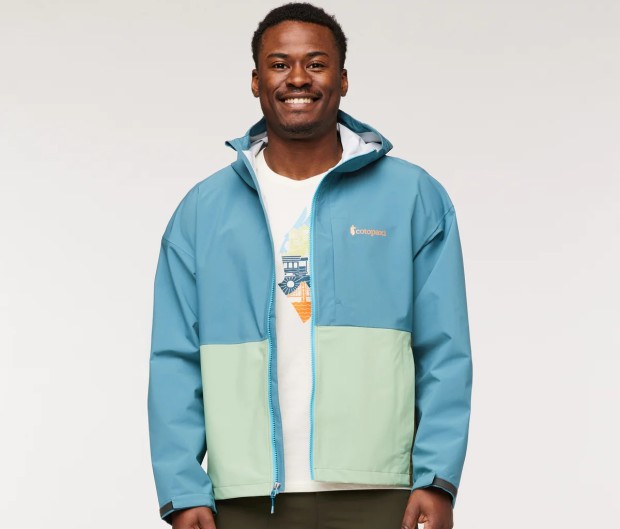
Courtesy Image
Cotopaxi isn’t afraid of bright shades and unexpected color blocking combos. The Cielo features a classic boxy cut, and it’s made out of recycled polyester with a PFC-free DWR treatment. The hood cinches down in one pull, and the waist has an encased elastic band that lays flat and tight against your pants. (The downside is you can’t adjust it.) Every seam is taped for a watertight seal, but this jacket is best for light to moderate precipitation.
[$145; cotopaxi.com]
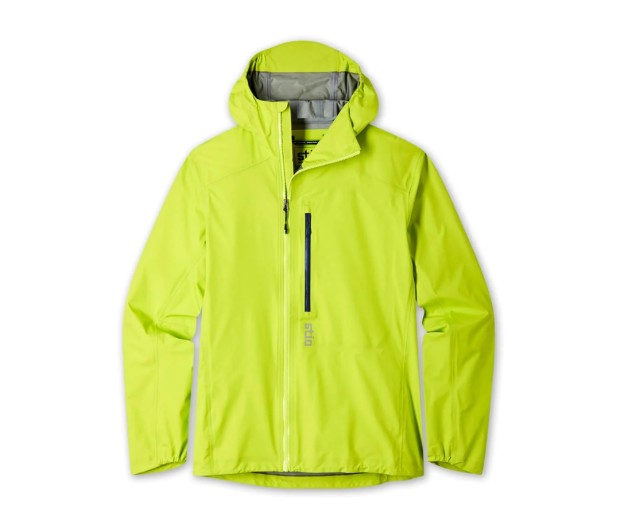
Courtesy Image
The second lightest shell on this list at 8.8 ounces, the Exploit Hooded Jacket allows you to move fast through less-than-ideal conditions. The Gore-Tex 3L construction blocks wind and precipitation while venting your body heat so you never feel soggy. The drop hem at the back, brim on the hood, and elasticized cuffs add extra protection to keep rain from seeping in and soaking you. This jacket is built to last, but if you ever want to swap it for something else, the brand’s Second Turn program allows you to trade in your gear and shop used apparel.
[$399; stio.com]
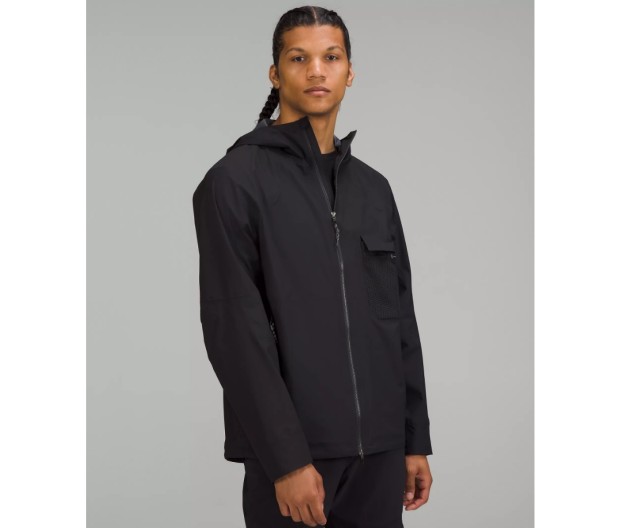
Courtesy Image
This jacket is designed specifically for hiking in wet weather, and it’s made with sealed seams and a rain-shedding polyester exterior fabric. Snug cuffs and the cinchable hood and waist lock out moisture, and the relaxed fit means you can wear several layers underneath for warmth on cold days. Two zippered hand pockets are big enough for a phone, keys, and a wallet, while an exterior chest pocket is meant to store damp accessories without getting the inside of the jacket wet.
[$298; lululemon.com]
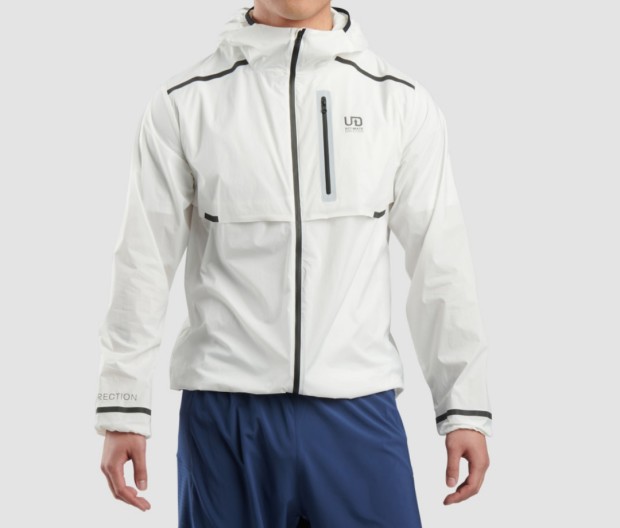
Courtesy Image
Designed for mountain runners who need a warm second layer when the weather turns rainy, the Aerolight Wind Jacket resists wind, rain, and cold. The tear-proof polyamide fabric is treated with a C6 DWR finish that lets raindrops bead and roll off rather than soak in. But the fabric also breathes, so you won’t be drenched in sweat from the inside. Elastic bindings at the hood and cuffs and a drawcord hem create a close fit, so the jacket won’t blow around. Best of all, it weighs just 5.3 ounces and packs down into the chest pocket—it’s small and light enough to fit in a running vest.
[$170; ultimatedirection.com]
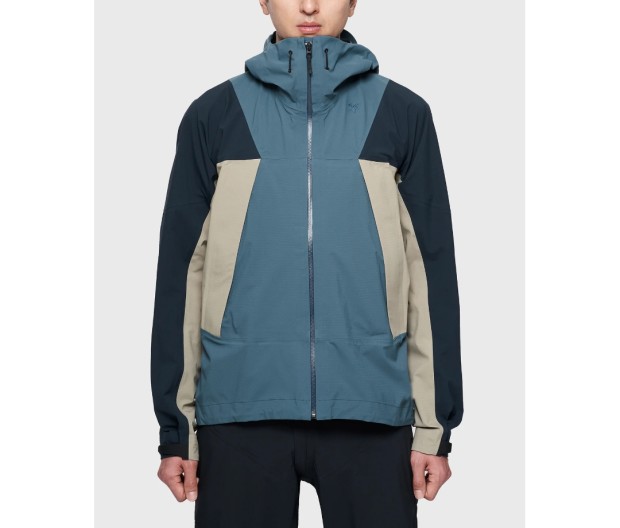
Courtesy Image
Stylish city dwellers will appreciate this 3L jacket’s streetwear-inspired design, but the Pertex Shieldair All Weather Jacket is just as capable on the trail as on the sidewalk. The hood is constructed to stay up in the wind even when the front zipper is open, and the sleeves are designed three-dimensionally (as opposed to flat) for a better fit and improved mobility. Two front pockets offer access to essentials even when wearing a pack, and the pocket bags are made of mesh, so you can open the pocket zippers to boost ventilation.
[$550; usshop.goldwin-global.com]
from Men's Journal https://ift.tt/1V4akTM
No comments:
Post a Comment